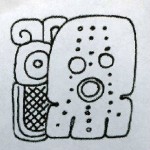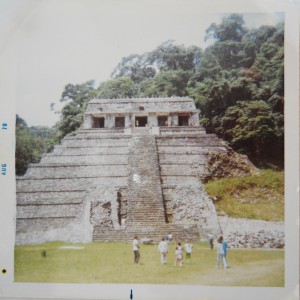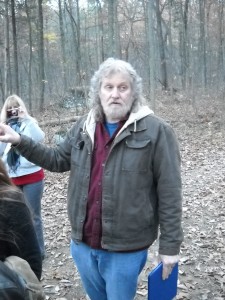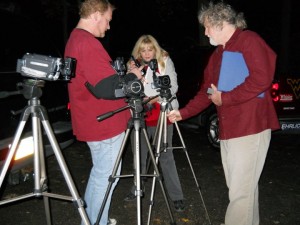Ordinarily, maps of a landscape contain traces of movement. This may be natural (the physical environment of rivers, lakes, mountains, etc.) and man-made (roads, railroads, etc.). This noted map movement, though, is horizontal, not vertical. On a map, the element of time is removed. The investigation of a haunted landscape is similarly treated by “ghost hunters”. The site is viewed as a contemporary map of both presence and absence. This contemporary horizontal map is the basis for a tech sweep, EVP session, and a monitored watch and wait. Points of horizontal movement and measurement are noted and designated if a deviation is recorded, a site of an anomaly.
A “ghost excavation” offers an alternative ‘mapped’ landscape; it considers the physical environment as a surface palimpsest. This is a landscape in which the traces of former occupations are not fully effaced but lie buried, in fragments, on the present landscape. This is more than a mere accretion of layers. The landscape is “becoming’ a series of interconnecting percolating actions which cut across and impinge from within. Any given landscape (not only a haunted one) will consist of numerous traces of past activity and behavior from multiple occupations of its space. This becomes the temporality of the landscape, not its history. This temporality involves the pattern of human activity that is retention from the past and is able to be unearthed.
The task of an investigator, as “ghost excavator”, is to examine how these different occupations can be recovered, how they interact, and coexist. We should not view these material (sensory) remains as a series of isolated elements that are buried under the guise of a sequential, linear history. Presence, even limited occupations of space (such as a “ghost hunt”) disrupts this palimpsest, resulting in displacements to a historical sequence, and produce evolving uncertainties within specific spaces in the already haunted landscape.
A tech sweep by “ghost hunters” of this landscape merely produces an image of horizontal movement across a surface from one point to another. This results in a two-dimensional space, one that is devoid of temporal depth and excludes the multiple layers of mixed past cultural occupations.
The actions of inhabiting a landscape constitute an embodied activity in which the landscape itself forms through sociocultural interactions. Activities that take place there define the nature of this landscape. Ghost “hunting”, as another habitation of the landscape, is involved in a developing haunted matrix. But ghost hunting (characterized by tech sweeps, monitored watch and wait, and EVP demands) does not extract the past (“what was”) in the present, so much as it builds (“what is”) the present for the future it imposes a contemporary reality onto the presence of the past.
A haunted landscape is a place of “time materializing”. It is not a place where time stands still in the present to be monitored and measured. The past percolates on the contemporary surface. To recover this requires a process that involves participation, engagement, and performance. The act of “inhabiting” the landscape becomes an engagement with these surface traces of the past. It involves re-discovering meaning rather than reading meaning into the landscape through tech measurements. It involves “what was” unearthed by “what is” which becomes, through contextual resonance, “what becomes’. This is a landscape that is emergent, embodying entities that bind together (in one space) the past, present, and future. What are needed are distinctive methods that can capture the simultaneous (rather than successive) nature of the past in the landscape. It is the past (and haunted) quality of the landscape that will emerge from engagements (excavations) in it. Presence will not usually respond to simply a demand or command!
The heterogeneous constantly shifting, layers of people and practices show how ghost research is a relational process. It is not purely descriptive, perceived, or measured. We must learn to acknowledge this mix and it’s contradictions to contemporary version of reality. A haunted landscape emerges from human actions in particular situations and spaces. That, being contextual, identifies the investigator as a member of a past community.
Fieldwork at haunted locations has both positive and negative connotations for ghost research:
- If the action is historical culturally resonating and contextual, then past presence can materialize;
- If the action involves a contemporary tech sweep, an EVP “demand and command” (“Show us a sign!..Do something!!”), or a monitored “watch and wait’, then the action adds to the current mix of reality. It does not unearth the past. It builds the future!
We must see haunted landscapes as “still points” – that is, as situations in which material (sensory) presence, human actions, cultural contexts, and research practices are intimately related.
This view is critical. We must confront current modes of research and field methodology. This questioning is critical: we must envisage landscapes as haunted surface in ghost research paradigmatic shift-toward participation. I propose that any sense of a haunted landscape must be archaeological, and this sensibility can offer a powerful range of tools that could be used to place the excavation process as a significant participatory act in ghost research. By approaching reality as a inter environment framed by people, situations, performance acts, and temporality. That is open, contingent, and emergent, an awareness of the true nature of a haunted landscape (any landscape) can be unearthed and understood! This is a mode of archaeological research in and of the present. This is cultural, not technological!






